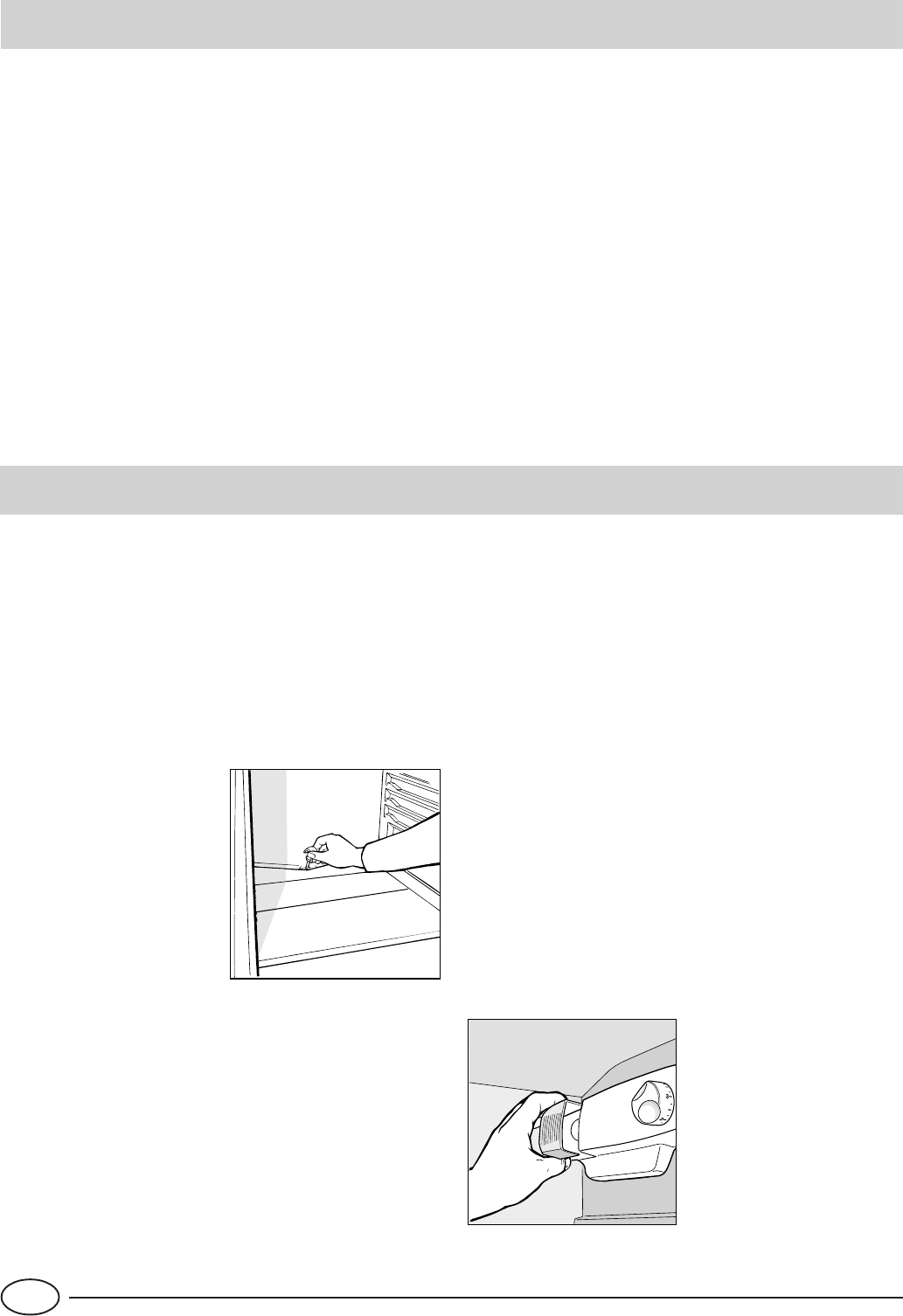
6
GB
Energy Saving Tips
- Install the Appliance Correctly
This means that the appliance should be installed away from
heat sources or direct sunlight in a well ventilated room.
- Correct Temperature Settings
Set the refrigerator temperature knob to one of the middle
settings. Very cold temperature settings will not only con-
sume a great deal of energy but will neither improve nor
lengthen the storage life of the food. Excessively cold tem-
peratures may ruin vegetables, cold cuts and cheese.
- Do Not Overfill Your Appliance
Remember that proper storage of food requires good air
circulation. Overfilling your appliance will hamper proper air
circulation and overwork the compressor.
- Keep the Door Closed
Open the refrigerator only when necessary; remember that
every time you open the door most of the cold air will be
lost. To bring the temperature back to the proper level, the
motor must run for a considerable amount of time, con-
suming a substantial amount of energy.
- Check the Seal on the Door
Keep the seal clean and soft so that it fits tightly against the
door to ensure that no cold air is lost.
- Never Put Food in the Refrigeror while Still
Hot
A container of hot food in the refrigerator will increase the
temperature significantly; allow food to cool to room tem-
perature before storing.
Caring for Your appliance
Before doing any cleaning, disconnect the appliance
from the electricity (by pulling out the plug or turning
off the general switch in your home).
Defrosting
WARNING: do not damage the refrigeration circuit.
Do not use mechanical devices or instruments other
than those recommended by the manufacturer to speed
up the defrosting process.
The evaporator defrosts
automatically during
operation; the defrost water
is collected by the conveyor
and is evaporated externally
automatically.
Clean the defrost water drain
hole periodically (see fig. 3)
to prevent the water from
collecting on the bottom of
the refrigerator instead of
flowing out.
Cleaning and Maintenance
- Your appliance is manufactured with hygienic, odourless
materials. To preserve these characteristics, always use sealed
containers to store foods in order to prevent spills, stains
and the formation of difficult to remove odours.
- Only use a water and bicarbonate solution to clean the
applianc. Clean the internal and exterior of your appliance
with a sponge soaked in a warm water and sodium bicarbo-
Fig. 3
nate solution, which is also a good disinfectant. If you do
not have any sodium bicarbonate at home, use a neutral
soap.
- What not to use: Do not use abrasive detergents, bleach
or detergents containing ammonia. Never use solvent based
products.
- All removable parts can be cleaned by soaking them in hot
soapy water or detergent. Remember to dry them thoroughly
before replacing them.
- What about the back panel? Dust may deposit on the back
panel and affect the proper running of the appliance. To
remove dust, vacuum away the dust very carefully using the
appropriate vacuum cleaner accessory.
- Discontinued use of the appliance: If the appliance is not in
use for any length of time, remember to clean the interior and
dry thoroughly, leaving the door open to prevent the forma-
tion of odours and mould.
- Replacing the light bulb. The bulb for lighting the interior
of the appliance is located at the back of the thermostat
box. Unscrew the burned out bulb and replace it with an-
other bulb with a wattage no higher than 15 Watt, follow
the instructions illustrated in fig. 4.
Fig. 4














